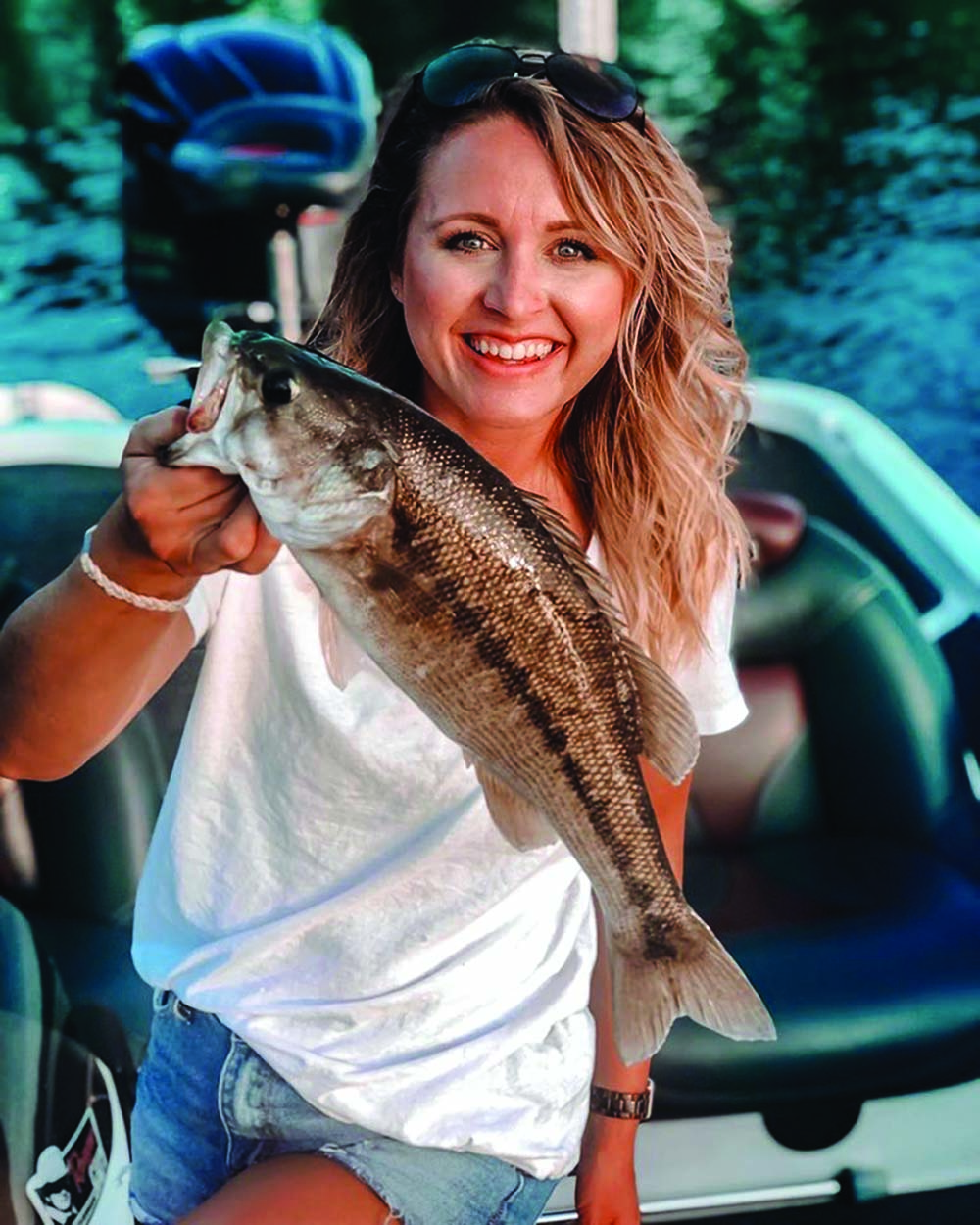
Decades ago, the Florida strain of largemouth bass gained a reputation for giving anglers better opportunities to catch monster bass. Since 1974, Alabama stocked more than 16 million Floridas in state waters, most about one to 1.5 inches long. Did the effort really produce larger bass?
“In the past 45 years, we’ve had mixed results from our Florida bass stockings, but we’ve learned a lot about how to manage largemouth bass,” says Nick Nichols, fisheries chief for the Alabama Division of Wildlife & Freshwater Fisheries. “Stockings vary by year. In recent years, we’ve stocked about 300,000 to 400,000 bass annually.”
Is a Florida bass a separate species or a subspecies of largemouth bass? Even biologists can’t agree. In fact, most people can’t tell the fish apart by looking at them. Biologists must analyze the genes to determine the difference.
Many lakes with large Florida bass populations do tend to consistently produce bigger bass, but not every lake. Although many people believe Florida bass grow larger, numerous anglers also believe that Floridas can become more challenging to catch. Escaping capture could allow bass to live longer and therefore grow bigger.
“Florida genetics do play a role in the large sizes of fish being caught in some reservoirs,” Nichols says. “Introduction of Florida bass genes into a system does have some influence, but it’s not the sole reason a trophy fishery becomes established. Adding Florida genes is just one piece in a much larger puzzle.”
Nature already contributed Florida genes to most state waters. Florida bass can’t tolerate cold water as well as northern largemouths. Naturally, Floridas or hybrids range as far north as the Piedmont region in Georgia and west through most of Alabama including the entire Mobile River basin. Where the strains naturally overlap, they frequently hybridize.
“Probably about 75 percent of the bass that existed in Alabama long before we stocked a single fish naturally had some Florida genes in them already,” Nichols advises. “Lake Eufaula naturally has Florida genes in about 50 percent of its bass.”
Biologists call a first-generation offspring between a Florida and a northern largemouth an “F1.” These crosses typically offer the best growth potential.
“In biology, there’s something called ‘hybrid vigor’ in which the first generation after an initial crossing tends to grow a little larger,” Nichols says. “When we hear major success stories of lakes producing bigger fish after people stocked Florida bass into them, that’s because of hybrid vigor from that first hybridization. Genetically, that only really happens once.”
In the early days, the state took a “shotgun approach” to stocking Floridas in as many systems as possible. That strategy worked better in some lakes than others. Back in the 1990s, state officials tried a new idea, a more focused approach. They tested this theory at Lake Guntersville.
“We started concentrating on stocking one or two reservoirs for two to four years in a row,” Nichols says. “We also concentrate on stocking bass into a particular part of a reservoir. We want to overwhelm the native fish with Florida bass in a localized area to increase our chances of establishing a larger Florida bass population spawning with native fish.”
Well known for producing giant bass, Lake Guntersville covers 69,100 acres in northeastern Alabama north of where Floridas and native bass naturally hybridize. The largest lake in Alabama runs about 75 miles along the Tennessee River.
“Guntersville is still the best place in Alabama to catch a big bass,” Nichols says. “The bigger bass coming out of Guntersville are probably not pure Floridas, but some intergrade of Florida and native genes. Probably 30 to 40 percent of the Guntersville bass have some Florida genes. However, if someone did a genetic analysis of big bass caught during tournaments at Lake Guntersville, we would probably see a much higher proportion of Florida genes because those anglers specifically target larger fish.”
More recently, state fisheries managers began working with Auburn University researchers to identify genetic markers tied to performance traits such as growth or longevity. In other words, rather than dump truckloads of fingerlings into a lake, researchers want to select and breed individual high-performance bass and release their offspring.
“In the future, we hope to start producing bass with higher proportions of specific performance markers and figure out the best way to stock those fish in our waters,” Nichols says.
John N. Felsher lives in Semmes, Ala. Contact him through Facebook.




